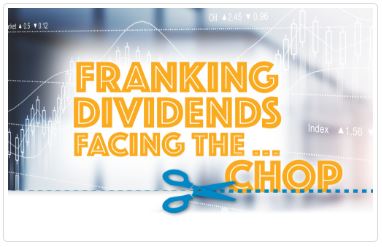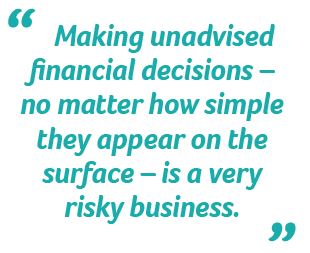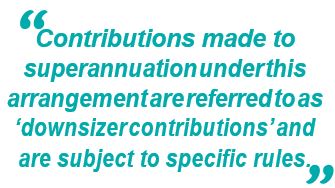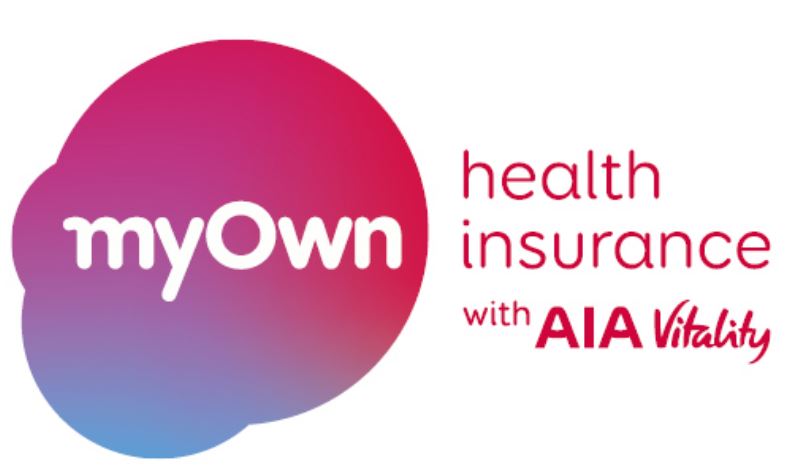2018 April Newsletter
It’s April already and as we head back to work after Easter we hope you enjoyed a peaceful and relaxing holiday weekend. April is generally a quiet month on the national stage as the Government prepares for the May Budget.
It’s been a turbulent few months for global markets, however, due to worries about rising US interest rates and more recently, the threat of a President Trump inspired global trade war. In early March, the US Fed lifted its federal funds rate by 0.5 percent to a target range of 1.5-1.75 percent, the sixth increase in the current cycle with two more expected this year. US rates are now above Australia’s cash rate of 1.5 percent for the first time in 17 years, sending the Australian dollar to a three-month low of 76.6c from its January high of US81c. The Fed’s rate hike was expected, but the threat of a trade war was not. Global shares fell sharply in March before a late-month pause as hopes were raised that the threat of a global trade war would be averted by negotiation between the US and China. Australia’s trade deficit with the US is already the second largest on record, with the rolling annual deficit hitting $18.5 billion in January from $18.2 billion in December. Our overall trade surplus fell to $11.4 billion in the year to January from $11.9 billion in December.
On a more positive note, Australia’s budget deficit shrank to $18.6 billion in the year to February, the lowest in 9 years, on the back of rising employment and company profits.
Franking credits facing the chop
 Here we go again. Superannuation could be about to undergo more change with the federal opposition announcing it will end cash refunds of franking credits on share dividends if it wins the next election. The change would have a significant impact on people paying little or no tax, especially self-funded retirees in pension phase. Seniors groups are up in arms, but many Australians have been left wondering ‘franking what?’.
Here we go again. Superannuation could be about to undergo more change with the federal opposition announcing it will end cash refunds of franking credits on share dividends if it wins the next election. The change would have a significant impact on people paying little or no tax, especially self-funded retirees in pension phase. Seniors groups are up in arms, but many Australians have been left wondering ‘franking what?’. Dividends paid by Australian companies are not just a source of income for investors; they also offer potential tax benefits in the form of franking credits, also known as imputation credits.
What is dividend imputation?
Dividend imputation was introduced by the Hawke/Keating Government in July 1987 to end the double taxation of company profits. Before then, companies paid tax on their earnings and shareholders were taxed on the dividends paid out of profits at their marginal rate.Under the current system, if the company has already paid tax on the income the Australian Taxation Office (ATO) gives shareholders a tax credit.
Dividends on shares with imputation credits are called franked dividends and may be fully or partly franked, depending on the amount of tax the company has paid and in what country. There are no credits for tax paid on overseas earnings.
The system was made more generous in July 2000 when the Howard/Costello Government allowed excess franking credits to be paid as a cash refund. The Labor Party proposal effectively restores the original tax treatment of dividends.
How does it work?
If the proposal is adopted, it will have no impact on investors on a marginal tax rate above the 30 per cent company tax rate. But investors who pay less than 30 per cent tax stand to lose some of their share income.Say an Australian company ‘OzInvest’ makes pre-tax earnings of $1 a share. It pays tax at the company rate of 30 per cent, or 30c a share, and returns the remaining 70c to shareholders as a fully franked dividend. The level of benefit you receive depends on your marginal tax rate.
High marginal tax rate
Sarah pays tax at the top marginal rate of 47 per cent including the Medicare levy. She has 100 shares in OzInvest and receives $70 in dividends plus a $30 imputation credit.Sarah’s taxable income on the dividend is $100 (after adding the $30 imputation credit to her $70 dividend), so she’s liable for tax of $47. However, this is offset by the $30 imputation credit leaving her with only $17 tax to pay.
Low marginal tax rate
Alice also receives taxable income of $100 from OzInvest, but she pays tax at the lowest marginal rate of 21 per cent (including Medicare levy). As the imputation credit of $30 is more than her tax payable of $21, she currently receives a tax refund of $9 cash. Under the new proposal, she would lose $9 a share.Paying no tax
Many retirees or people who earn below the annual tax-free threshold of $18,200 pay no tax at all on their fully franked shares. Because franking credits are fully refundable, they can claim a full refund from the ATO.David has a self-managed super fund in pension phase which pays no tax and he has no other income. He receives a $70 dividend from OzInvest and claims a cash rebate of the full $30 franking credit. Under the new proposal, he would lose this $30 a share.
Still at proposal stage
Of course, the proposal is just that. With a federal election not due until next year, the earliest it could come into effect would be July 2019 and only if passed by both houses of parliament. Already there are hints of compromise, with Labor leader Bill Shorten saying full and part-pensioners and people on government allowances will be exempt from the change.It’s too early to be alarmed or to change investment strategy based on what may or may not happen in future. But it is important to understand how the proposed changes could potentially affect you and what alternative investment strategies may be beneficial.
Switching or consolidating super funds can be a very risky business
Superfund members are regularly encouraged to consolidate their super accounts into one account to reduce paperwork and avoid paying multiple administrative
The client was a 31-year-old woman who was diagnosed with motor neurone disease (MND) in September last year. MND is a progressive and terminal disease that attacks the motor neurones, or nerves, in the brain and spinal cord. She was due to be married in brought the marriage forward due to her progressive deterioration.
The woman, who has a one-year-old son, wanted to get her affairs in order, so the night before she was scheduled to meet with a financial planner, she decided to consolidate her three separate superannuation accounts into one account online. What she failed to realise was that by doing this, she would lose all default insurance cover in the super accounts she was rolling over.
So, by rolling her REST super and SA Super into her HESTA account, she immediately lost $365,000 in death cover and $185,000 in total permanent disablement cover that she had in her REST super account.
She was not aware of this until she met with a financial planner the following day. Both she and the adviser were horrified by what had happened, and the financial ramifications of her actions.
Numerous phone calls were made to REST superannuation, who, while sympathetic, advised they couldn’t do anything to rectify the situation as it had to be a guaranteed payout and they were acting on the client’s authority. REST then rang back and said they were willing to take the case on board as long as they received a statement of good health on the client, which obviously wasn’t going to happen.
I spoke to AIA who do the group insurance for REST, and they put me onto someone who looks after the group cover for REST. After numerous calls and numerous dead ends, we continued to escalate the case within REST. AIA eventually came back and said they would reinstate the death cover and the TPD cover.
Legally there was no onus on AIA to overturn the client’s decision and reinstate the cover. They did so out of compassion and understanding, and at a significant loss to themselves given the client’s terminal illness.
This will obviously make a huge difference to the client and her family going forward. The client’s husband had just lost his job after 12 years of service, and AIA’s compassion means a guaranteed payout of $365,000 which will pay off their mortgage and give them some extra to live on.
So, the moral of this story is while there are certainly benefits in consolidating accounts, it is important to check whether you will be able to get the same level of insurance cover in your chosen fund.
Reference : Prepare for Life, David Spiteri, Life Insurance Specialist
Downsizing - Making extra contributions to Super
In November 2017, the Government passed legislation that will allow certain individuals who sell their main residence to contribute up to $300,000 of the sale proceeds to superannuation, without being constrained by the usual restrictions that otherwise apply to contributions - including contribution caps.
The legislation is designed to reduce the pressure on housing affordability.
Contributions made to superannuation under this arrangement are referred to as ‘downsizer contributions’ and are subject to specific rules. Downsizer contributions are treated separately for concessional and non-concessional contributions.
How it works
To be eligible to make downsizer contributions, several conditions need to be met, including:
- Contributions may only be made by an individual aged 65 or over;
- The contributions arise from the sale of a residence that has, at some or all the time of its ownership, qualified as the individual’s main residence for Capital Gains Tax purposes;
- The residence has been owned by the individual and/or their spouse for at least ten years;
- The contribution of up to $300,000 is made from the sale proceeds of the residence within 90 days of the change of ownership (settlement);
- The contract for the sale of the property was entered into on or after 1 July 2018;
- An election to make a downsizer contribution is made in the approved form; and
- The individual has not previously made a downsizer contribution.
Qualifying residence
To qualify as a downsizer contribution, the sale proceeds from which the contribution is to be made must be in respect of the sale of a property that has, at some time during its ownership, qualified for a Capital Gains Tax exemption as the individual’s, or their spouse’s main residence.
Therefore, the proceeds from the sale of a commercial property, or an investment property that has never qualified for the main residence Capital Gains Tax exemption, do not qualify as a downsizer contribution.
Furthermore, a qualifying residence does not include a houseboat, caravan or mobile home.
Making a downsizer contribution is contingent upon selling a qualifying residence. However, there is no requirement that a replacement residence must be purchased. For example, a person selling their home and planning to rent a property, relocate to a retirement village or residential aged care facility, or move in with family, may still make a downsizer contribution.
How are contributions treated?
A downsizer contribution will be treated as part of the contributor’s tax-free component of their superannuation. Therefore, it will not be subject to tax at the time the contribution is made to the super fund.
Contributions to superannuation by individuals aged 65 or older can only be made where the individual meets a work test. Furthermore, contributions can generally only be made to age 75.
However, individuals wishing to make downsizer contributions are not subject to the work test or age 75 requirements.
While non-concessional contributions are subject to several restrictions including an annual limit of $100,000, and cannot be made by people with more than $1.6m in super, these restrictions do not apply to downsizer contributions.
Downsizer contributions are counted towards an individual’s total superannuation balance. This may impact on their ability to make future non-concessional contributions and receive other Government benefits such as the Government co-contribution and a tax offset for contributions they may make for an eligible spouse.
Transfer balance cap and taxation
The superannuation reforms that were introduced from 1 July 2017, restrict the amount that an individual may transfer to a superannuation pension account. This is known as the transfer balance cap. The transfer balance cap is currently $1.6m.
Consequently, even though an individual may be able to make a downsizer contribution, the contribution may not be able to be transferred to a pension account where the individual has already exhausted their transfer balance cap.
Whether it is worth retaining downsizer contributions in a superannuation accumulation account, as opposed to investing the surplus funds outside super, will depend on the individual’s personal tax position.
Social Security
An individual’s main residence is generally exempt from the assets and income test when assessing entitlement for Social Security and Department of Veterans Affairs benefits, including the age pension or service pension.
However, selling the main residence and depositing the surplus sales proceeds to a bank account, allocating to other investments, or making a downsizer contribution to superannuation may result in amounts that have previously been exempt from the assets and income tests now being assessed under these tests. This may result in the loss of or a reduction in the amount of pension being paid.
Example
Fred and Francis are aged 68 and 66 respectively. They have owned their family home for more than 10 years. They list their home for sale in May 2018 and enter a contract to sell the home for $900,000 in July 2018.
They are planning to buy an apartment for $500,000. The surplus arising from the sale of their main residence is $400,000. They could each make a downsizer contribution of $200,000, or any other combination, subject to a maximum of $300,000 per individual.
If Fred and Francis are receiving an age pension, the surplus proceeds from the sale of their main residence ($400,000) will be treated as an assessable asset and will result in their age pension reducing or ceasing to be payable, depending on their overall financial position.
Conclusion
Making a downsizer contribution to super as a result of these changes will be a viable strategy for some, and perhaps not so viable for others.
Whether it is suitable or not will depend on personal circumstances, including the current amount held in super, personal tax position, and whether an individual is receiving social security or DVA benefits.
Superannuation can be extremely complex. Therefore, before embarking on making downsizer contributions, suitable advice should be sought from your Diamond Blue financial planner.
Reference: Prepare for Life, Peter Kelly, Retirement Strategies and Solutions
Private Health Insurance Coverage
As you may be aware, health insurance premiums have risen by an average of 3.95% from 1 April this year. You may save money, obtain better coverage and increase your health and wellbeing with the myOwn health insurance.
myOwn is an innovative, fresh entrant in the health insurance industry, backed by insurance giant AIA and the not for profit health fund GMHBA. myOwn offers competitively priced health insurance packages but rewards you for staying healthy via its popular AIA Vitality program.
How does the AIA Vitality program work?
- Step 1 – Know your health by completing online assessments and receive a full report on your current health situation.
- Step 2 – Earn AIA Vitality points for doing things that help you improve your health, such as walking, exercising/ going to the Gym and performing on routine health checks with your GP, dental checks, eye checks etc.
- Step 3 – Receive AIA Vitality rewards for staying healthy, which include:
- Up to 50% cashback on two Qantas flights each year, with no cap on the amount of cashback
- Gift cards of up to $650 each year to be chosen with the following retailers – Myer, JB Hi Fi, Rebel, Woolworths & Dymocks.
- $5 weekly reward vouchers that can be redeemed at shops such as Woolworths, Boost Juice, Hoys & iTunes
- Discounted vouchers through partners such as HOYTS, Endota spa (up to 50% off) and may more
- Discounted Gym memberships (Fitness First, Virgin Active, Anytime Fitness) – Up to 50% off and cash back opportunities.
Please let us know if you would like your health insurance policy reviewed by myOwn and we will arrange for an experienced representative to contact you to discuss further.
Please note this information is of a general nature only and has been provided without taking account of your objectives, financial situation or needs. Because of this, we recommend you consider, with or without the assistance of a financial advisor, whether the information is appropriate in light of your particular needs and circumstances.
Copyright in the information contained in this site subsists under the Copyright Act 1968 (Cth) and, through international treaties, the laws of many other countries. It is owned by EFDB Pty Ltd unless otherwise stated. All rights reserved. You may download a single copy of this document and, where necessary for its use as a reference, make a single hard copy. Except as permitted under the Copyright Act 1968 (Cth) or other applicable laws, no part of this publication may be otherwise reproduced, adapted, performed in public or transmitted in any form by any process without the specific written consent of EFDB Pty Ltd.
EFDB Pty Ltd | Sydney CBD | Northern Beaches | ABN 64 112 871 922 | AFSL 311720
Categories
- Blogs (51)
- Budget (19)
- Community and Sponsorships (5)
- Cyber Security (3)
- Economic / Topical (36)
- End of Financial Year (8)
- Estate Planning (4)
- Foreign Exchange (1)
- Gifting (2)
- Health (16)
- Insurances (18)
- Investments (29)
- Lifestyle (41)
- Newsletters (55)
- Retirement (19)
- Share Buyback (1)
- Superannuation (27)
Recent Posts
Archives
- November 2022 (1)
- May 2022 (1)
- April 2022 (1)
- February 2022 (1)
- December 2021 (1)
- November 2021 (1)
- September 2021 (1)
- June 2021 (1)
- May 2021 (1)
- April 2021 (1)
- March 2021 (1)
- February 2021 (1)
- January 2021 (1)
- December 2020 (1)
- October 2020 (1)
- September 2020 (1)
- August 2020 (1)
- July 2020 (1)
- June 2020 (1)
- May 2020 (1)



